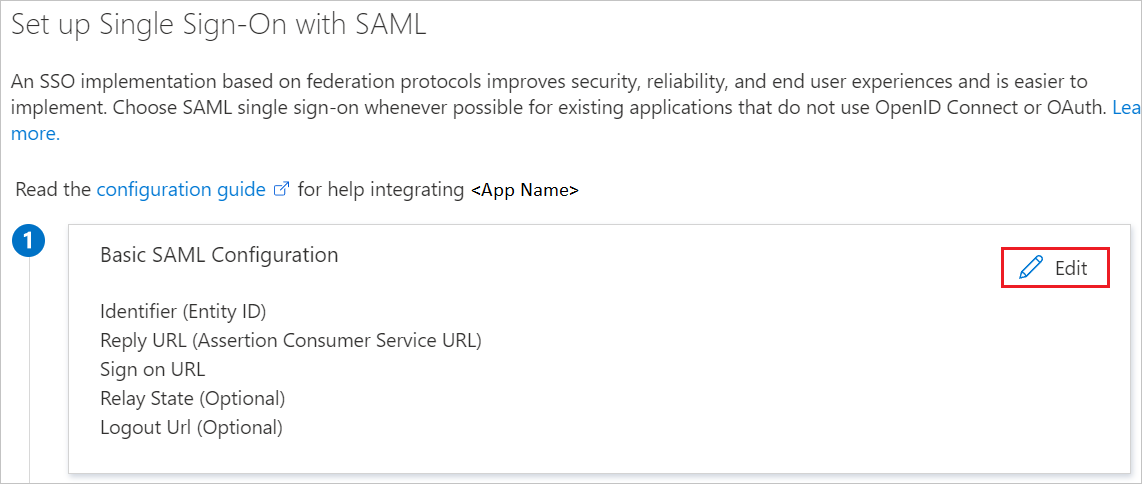Microsoft Entra SSO integration with CAREERSHIP
In this article, you learn how to integrate CAREERSHIP with Microsoft Entra ID. CAREERSHIP is the NO.1 LMS (LEARNING MANAGEMENT SYSTEM) for Enterprises. It is an LMS that has continued to evolve while responding to the demands of Japan companies, and while it is high performance and multi-functional, it is also easy to use at the same time. When you integrate CAREERSHIP with Microsoft Entra ID, you can:
- Control in Microsoft Entra ID who has access to CAREERSHIP.
- Enable your users to be automatically signed-in to CAREERSHIP with their Microsoft Entra accounts.
- Manage your accounts in one central location.
You configure and test Microsoft Entra single sign-on for CAREERSHIP in a test environment. CAREERSHIP supports SP initiated single sign-on.
Prerequisites
To integrate Microsoft Entra ID with CAREERSHIP, you need:
- A Microsoft Entra user account. If you don't already have one, you can Create an account for free.
- One of the following roles: Application Administrator, Cloud Application Administrator, or Application Owner.
- A Microsoft Entra subscription. If you don't have a subscription, you can get a free account.
- CAREERSHIP single sign-on (SSO) enabled subscription.
Add application and assign a test user
Before you begin the process of configuring single sign-on, you need to add the CAREERSHIP application from the Microsoft Entra gallery. You need a test user account to assign to the application and test the single sign-on configuration.
Add CAREERSHIP from the Microsoft Entra gallery
Add CAREERSHIP from the Microsoft Entra application gallery to configure single sign-on with CAREERSHIP. For more information on how to add application from the gallery, see the Quickstart: Add application from the gallery.
Create and assign Microsoft Entra test user
Follow the guidelines in the create and assign a user account article to create a test user account called B.Simon.
Alternatively, you can also use the Enterprise App Configuration Wizard. In this wizard, you can add an application to your tenant, add users/groups to the app, and assign roles. The wizard also provides a link to the single sign-on configuration pane. Learn more about Microsoft 365 wizards..
Configure Microsoft Entra SSO
Complete the following steps to enable Microsoft Entra single sign-on.
Sign in to the Microsoft Entra admin center as at least a Cloud Application Administrator.
Browse to Identity > Applications > Enterprise applications > CAREERSHIP > Single sign-on.
On the Select a single sign-on method page, select SAML.
On the Set up single sign-on with SAML page, select the pencil icon for Basic SAML Configuration to edit the settings.

On the Basic SAML Configuration section, perform the following steps:
a. In the Identifier textbox, type a value using the following pattern:
https://<tenant_name>.learningpark.jp/e/b. In the Reply URL textbox, type a URL using the following pattern:
https://<tenant_name>.learningpark.jp/e/SamlListenerc. In the Sign on URL textbox, type a URL using the following pattern:
https://<tenant_name>.learningpark.jp/e/Saml?corp_code=<corporate_code>Note
These values are not real. Update these values with the actual Identifier, Reply URL and Sign on URL. Contact CAREERSHIP support team to get these values. You can also refer to the patterns shown in the Basic SAML Configuration section.
On the Set-up single sign-on with SAML page, in the SAML Signing Certificate section, find Federation Metadata XML and select Download to download the certificate and save it on your computer.

On the Set up CAREERSHIP section, copy the appropriate URL(s) based on your requirement.

Configure CAREERSHIP SSO
To configure single sign-on on CAREERSHIP side, you need to send the downloaded Federation Metadata XML and appropriate copied URLs from the application configuration to CAREERSHIP support team. They set this setting to have the SAML SSO connection set properly on both sides.
Create CAREERSHIP test user
In this section, you create a user called Britta Simon at CAREERSHIP. Work with CAREERSHIP support team to add the users in the CAREERSHIP platform. Users must be created and activated before you use single sign-on.
Test SSO
In this section, you test your Microsoft Entra single sign-on configuration with following options.
Click on Test this application, this will redirect to CAREERSHIP Sign-on URL where you can initiate the login flow.
Go to CAREERSHIP Sign-on URL directly and initiate the login flow from there.
You can use Microsoft My Apps. When you click the CAREERSHIP tile in the My Apps, this will redirect to CAREERSHIP Sign-on URL. For more information, see Microsoft Entra My Apps.
Additional resources
Related content
Once you configure CAREERSHIP you can enforce session control, which protects exfiltration and infiltration of your organization’s sensitive data in real time. Session control extends from Conditional Access. Learn how to enforce session control with Microsoft Cloud App Security.